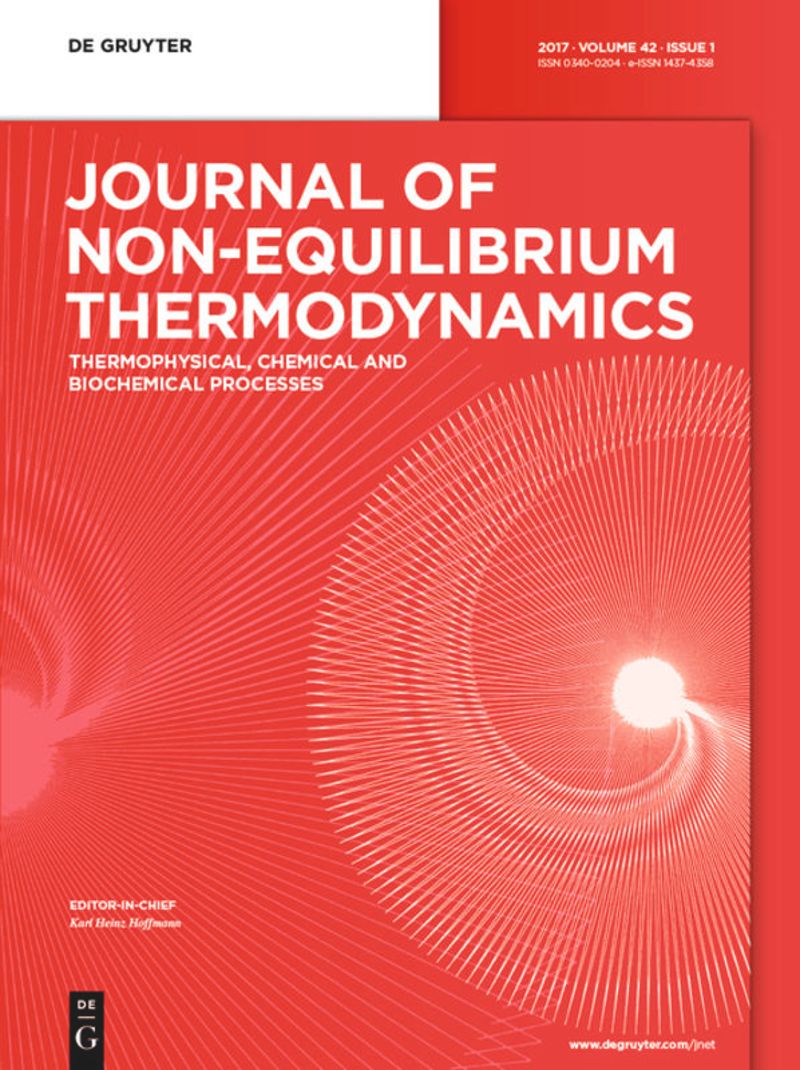Nonlinear dynamics of blood passing through an overlapped stenotic artery with copper nanoparticles
IF 4.2
3区 工程技术
Q1 MECHANICS
引用次数: 6
Abstract
Abstract The dynamics of blood carrying microscopic copper particles through overlapping stenotic arteries is an important research area needed for scrutinizing and exploring dynamics through blood vessels. Adipose tissue deposition and other elements of atherosclerosis generate the uncommon artery disease known as arterial stenosis. It limits blood flow and raises the risk of heart disease. Using the Casson model, it is feasible to shed light on the peristaltic blood flow of copper nanoparticles over an overlapping stenotic artery. Nothing is known about the study of heat sink/source, buoyancy and Lorent force, and volume fraction because the focus is on the dynamics of blood carrying minute copper particles through an overlapping stenotic artery. When the Lorentz force is significant, the transport mentioned above was evaluated utilizing stenosis approximations to examine the stream function, wall shear stress, Nusselt number, and flow resistance distribution. In addition, temperature solutions were identified analytically, whereas a perturbation approach acquired velocity solutions. Temperature distribution and velocity are greater in stenosed arteries than in unstenosed arteries. Furthermore, extreme velocity and temperature rise as it reaches the core of the artery and falls as one approaches the wall. When the heat source parameter values increase due to an improvement in the fluid’s thermal state, the temperature distribution increases.非线性动力学的血液通过重叠狭窄动脉与铜纳米颗粒
摘要携带微小铜颗粒的血液通过重叠狭窄动脉的动力学是仔细观察和探索血管动力学所需的一个重要研究领域。脂肪组织沉积和动脉粥样硬化的其他因素产生了一种罕见的动脉疾病,称为动脉狭窄。它限制血液流动,增加患心脏病的风险。使用Casson模型,可以揭示铜纳米颗粒在重叠狭窄动脉上的蠕动血流。对散热器/热源、浮力和洛伦特力以及体积分数的研究一无所知,因为重点是血液携带微小铜颗粒穿过重叠狭窄动脉的动力学。当洛伦兹力显著时,利用狭窄近似值来评估上述输运,以检查流函数、壁剪切应力、努塞尔数和流动阻力分布。此外,温度解是解析确定的,而微扰方法获得了速度解。狭窄动脉的温度分布和速度大于未狭窄动脉。此外,当它到达动脉核心时,极端速度和温度会上升,而当它接近动脉壁时会下降。当热源参数值由于流体热状态的改善而增加时,温度分布增加。
本文章由计算机程序翻译,如有差异,请以英文原文为准。
求助全文
约1分钟内获得全文
求助全文
来源期刊
CiteScore
9.10
自引率
18.20%
发文量
31
审稿时长
1 months
期刊介绍:
The Journal of Non-Equilibrium Thermodynamics serves as an international publication organ for new ideas, insights and results on non-equilibrium phenomena in science, engineering and related natural systems. The central aim of the journal is to provide a bridge between science and engineering and to promote scientific exchange on a) newly observed non-equilibrium phenomena, b) analytic or numeric modeling for their interpretation, c) vanguard methods to describe non-equilibrium phenomena.
Contributions should – among others – present novel approaches to analyzing, modeling and optimizing processes of engineering relevance such as transport processes of mass, momentum and energy, separation of fluid phases, reproduction of living cells, or energy conversion. The journal is particularly interested in contributions which add to the basic understanding of non-equilibrium phenomena in science and engineering, with systems of interest ranging from the macro- to the nano-level.
The Journal of Non-Equilibrium Thermodynamics has recently expanded its scope to place new emphasis on theoretical and experimental investigations of non-equilibrium phenomena in thermophysical, chemical, biochemical and abstract model systems of engineering relevance. We are therefore pleased to invite submissions which present newly observed non-equilibrium phenomena, analytic or fuzzy models for their interpretation, or new methods for their description.

 求助内容:
求助内容: 应助结果提醒方式:
应助结果提醒方式:


